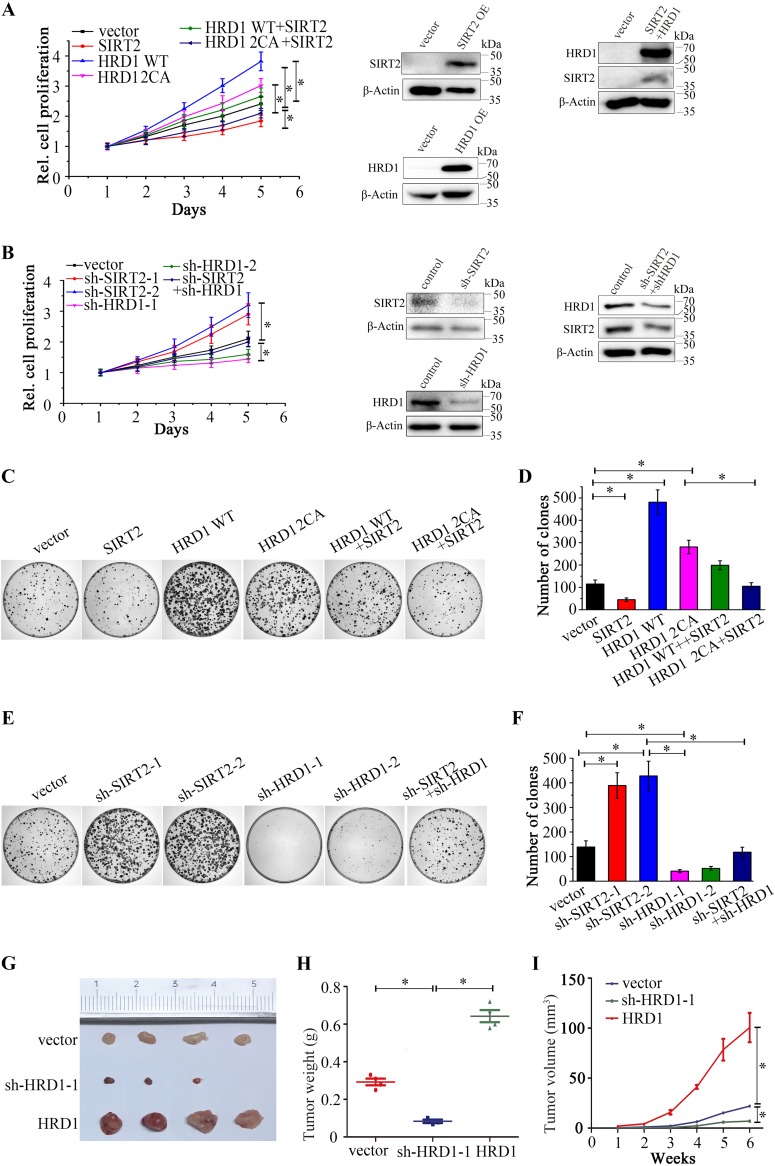FIG 5.
HRD1 knockdown suppresses lung cancer cell proliferation and tumorigenesis. (A and B) The cell proliferation of A549 cancer cells stably expressing the indicated plasmids or combination of plasmids was determined by the 3-(4,5-dimethylthiazol-2-yl)-5-(3-carboxymethoxyphenyl)-2-(4-sulfophenyl)-2H-tetrazolium (MTS) assay. The error bars represent the SEMs from triplicate experiments. HRD1 2CA mutant C291, 294A was used. The protein levels of SIRT2, HRD1, or both were determined by Western blotting using β-actin as a loading control in A549 cells stably expressing control vector or indicated overexpression or knockdown plasmids. (C to F) A clonogenic assay was performed to measure the colony formation capacity of A549 cancer cells stably expressing the indicated plasmids (C) or stably expressing the indicated knockdown plasmids (E). The quantitation of colony number is shown in panels D and F. Error bars represent the SD from triplicate experiments. *, P < 0.05. (G to I) A549 cells stably expressing control, HRD1 knockdown, and HRD1 plasmids were injected subcutaneously into nude mice. Six weeks after injection, tumors were isolated and photographed (G). The tumor sizes were measured and are depicted as tumor weight (H) and tumor volume (I).

